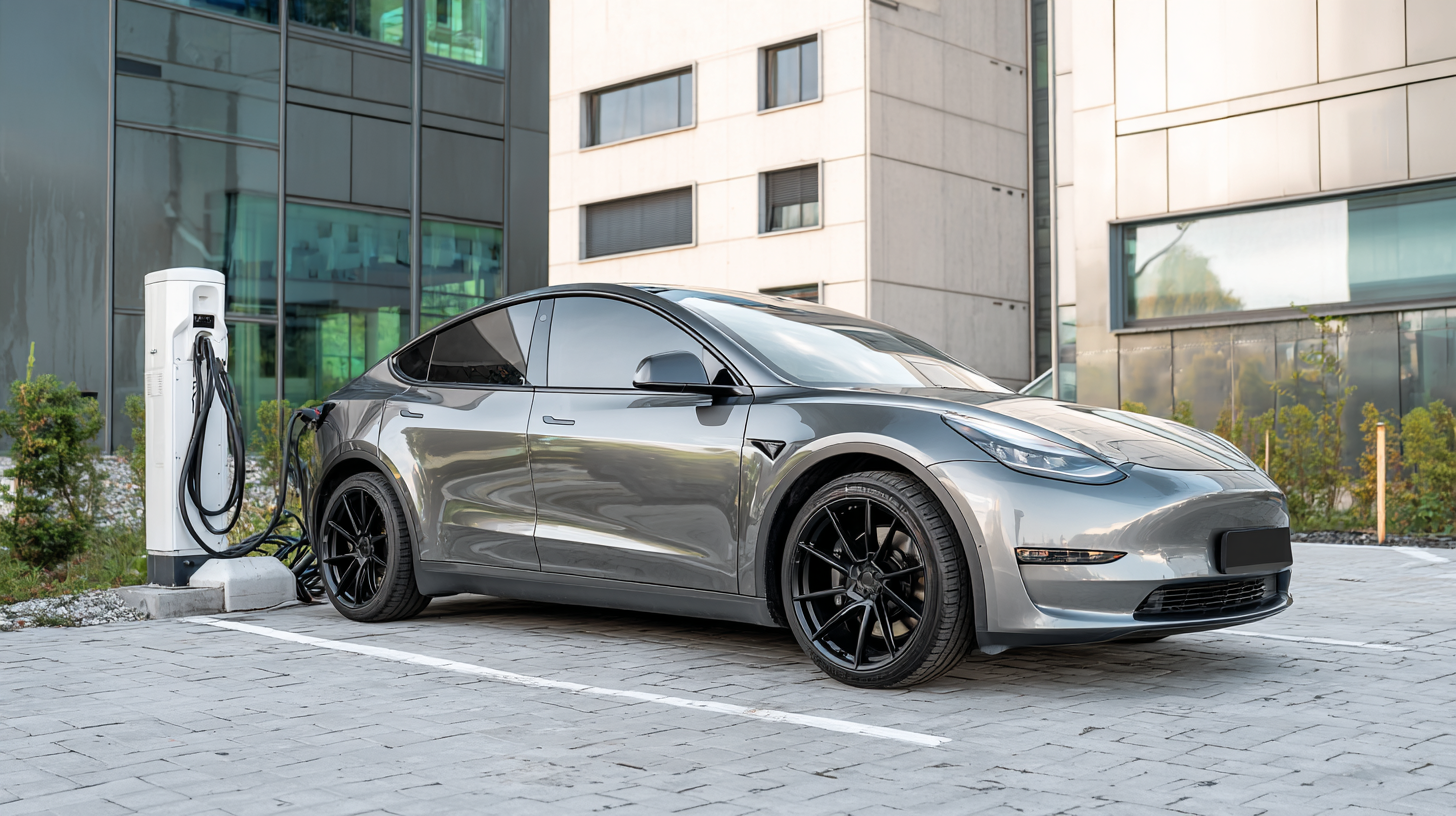As we venture into the future of the Electric Charging Business in 2025, it is essential to understand the rapid transformations shaping this industry. With the global electric vehicle (EV) market projected to grow at a compound annual growth rate (CAGR) of 20.5% from 2021 to 2028, the demand for efficient and accessible charging solutions is more critical than ever. According to the International Energy Agency, the number of public charging points must increase to about 2.5 million by 2025 to meet the needs of anticipated EV adoption, which is expected to reach 145 million worldwide. This boom presents significant opportunities for businesses involved in electric charging infrastructure and services. To stay ahead in this competitive landscape, companies must adapt to technological advancements, shifting consumer behaviors, and evolving regulatory frameworks. As we explore what lies ahead, we will delve into innovative strategies that can empower stakeholders to thrive in the burgeoning Electric Charging Business.

The global electric vehicle (EV) adoption trend is reshaping the landscape of the charging infrastructure market, with projections indicating that the onboard charger market will grow from $6.93 billion in 2025 to $22.89 billion by 2032, reflecting a compound annual growth rate (CAGR) of 18.6%. As the emphasis on sustainability and environmental protection intensifies, battery electric vehicles (BEVs) are becoming increasingly crucial. The demand for efficient charging solutions is paramount, as EVs will require robust networks to support their growth.
To stay ahead in this evolving market, businesses should invest in innovative charging technologies, particularly in GAN (Gallium Nitride) power devices, which are set to experience substantial growth due to their efficiency advantages in automotive and consumer electronics sectors. The GAN power device market is expected to significantly expand from 2025 to 2033, driven by increasing demand for high-performance power solutions in EV applications.
Tips:
1. Keep abreast of technological advancements in charging infrastructure to provide customers with the latest solutions.
2. Collaborate with stakeholders to enhance EV charging networks, ensuring enhanced accessibility and efficiency for consumers as demand rises.
3. Focus on sustainable practices in your business model to align with global trends towards environmental consciousness.
As we look toward 2025, the electric charging business is poised for significant transformation, driven by emerging technologies that promise to enhance the convenience and efficiency of charging solutions. Innovations such as ultra-fast charging stations are set to redefine the charging experience. These stations utilize advanced battery technology, enabling electric vehicles (EVs) to charge from zero to 80% in just 15 minutes. This leap in charging speed can significantly reduce downtime for drivers, making electric vehicles more viable for longer trips and boosting overall adoption.
Another promising development is the integration of renewable energy sources into charging networks. Solar and wind energy are becoming increasingly prevalent in charging station operations, allowing for a cleaner and more sustainable energy supply. Moreover, advancements in smart grid technology will facilitate real-time energy management, enabling charging stations to optimize energy use based on demand and availability, thus reducing costs for both operators and consumers. These innovations not only enhance the infrastructure of electric charging but also align with global sustainability goals, paving the way for a more responsible approach to energy consumption in the transportation sector.

As we approach 2025, the landscape of electric charging businesses is set to be significantly influenced by a variety of regulatory changes and incentives. Governments worldwide are increasingly focusing on sustainability and reducing carbon emissions, leading to the implementation of policies that support the expansion of charging infrastructure. These may include tax incentives for businesses that install charging stations, as well as subsidies for consumers purchasing electric vehicles. Staying informed about these regulatory shifts will be crucial for electric charging business owners to capitalize on new opportunities.
To thrive in this evolving market, businesses should consider integrating innovative technologies that improve the user experience and increase charging efficiency. Investing in smart charging solutions can optimize energy consumption and reduce costs, making services more appealing to customers. Additionally, fostering partnerships with local governments and organizations can enhance community engagement and support for charging initiatives.
Tip: Regularly review government websites and industry reports to stay abreast of upcoming regulations and incentives that might impact your business. Building a strong network with other stakeholders in the charging ecosystem can also provide valuable insights and collaboration opportunities to stay competitive.

The electric charging sector is poised for significant growth by 2025, with the
global forklift market expected to reach
$86.57 billion and double to
$180.47 billion by 2032, boasting a
compound annual growth rate (CAGR) of 11.1%.
This growth is fueling the expansion of
electric vehicle (EV) infrastructure as
companies strive to meet the increasing demand for charging stations. Additionally,
Chinese EV brands are making a strong
overseas push, entering markets like Thailand and reshaping the global automotive landscape.
To stay ahead in this evolving market, businesses should focus on
competitive strategies that enhance
their infrastructure offerings.
Timely charging solutions and
innovative technologies will be key differentiators.
Tips:
As we look towards 2025, understanding consumer behavior is critical for electric vehicle (EV) charging businesses aiming to thrive in a rapidly evolving market. EV owners are increasingly expecting a seamless and user-friendly charging experience. This includes a demand for accessible charging stations that are strategically located, reducing range anxiety and making long trips more feasible. Owners also seek real-time availability updates through mobile apps, enabling them to plan their journeys without unexpected delays.
Moreover, there is a growing expectation for charging infrastructure to be integrated with smart technologies. Consumers desire a charging experience that provides customizable options, such as the ability to choose charging speeds and pricing models based on their preferences. Sustainability is also becoming a significant factor; EV owners are more inclined to support businesses that utilize renewable energy sources for charging their fleets. By investing in these consumer-driven insights, electric charging businesses can not only meet current expectations but also anticipate future trends, positioning themselves as leaders in the industry.
